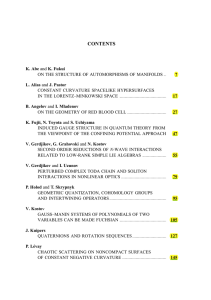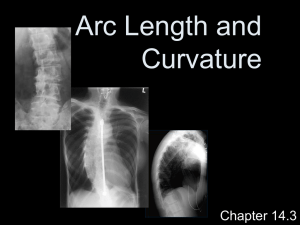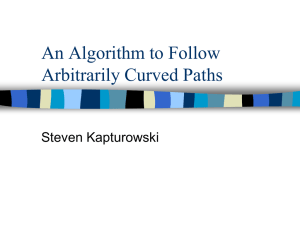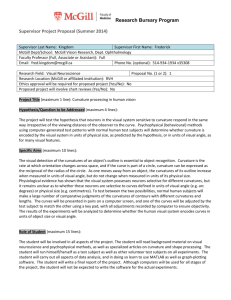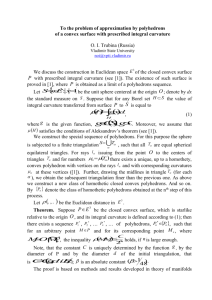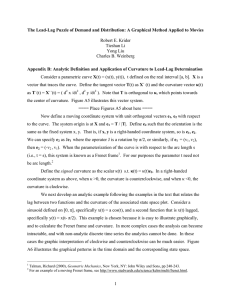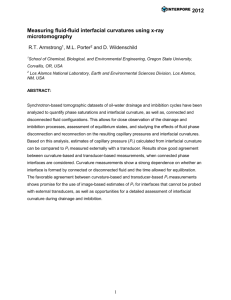x, y, h
advertisement
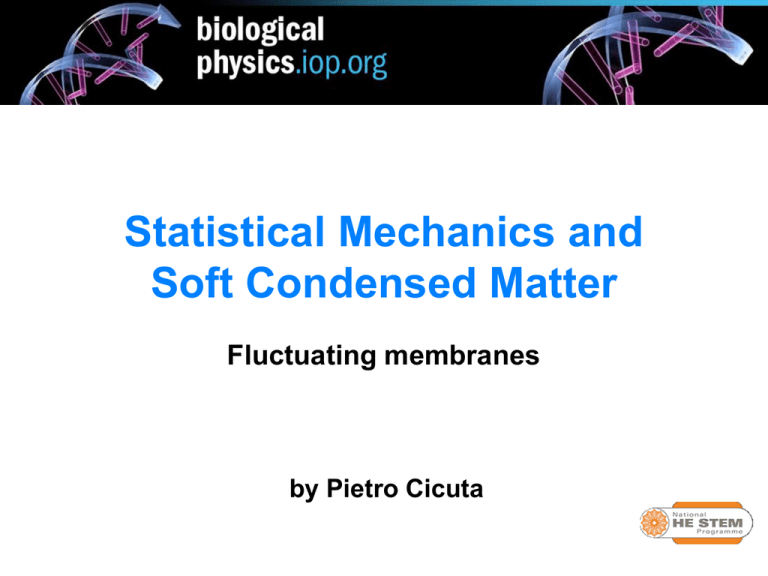
Statistical Mechanics and Soft Condensed Matter Fluctuating membranes by Pietro Cicuta Slide 1: The thermally driven roughness of membranes can be analysed statistically. Reprinted with permission from Dr Markus Deserno, Carnegie Mellon University Position vector: s = (x, y, h (x, y)) Tangent vectors along x and y: rx (1, 0, hx ) ry (0, 1, hy ) where h hx x h or hy y Plane tangent to the surface at (x, y, h (x, y)): r r h ,h ,1 n x y rx ry 1 h x 2 x y hy2 Slide 2: Monge representation of a deformed membrane. 1/ 2 Surface metric g: g (1 hx2 hy2 ) Element of area dA: dA rx ry dxdy 1 hx2 hy2 = g dx dy for small h: Slide 3: Monge representation continued. 1/ 2 dxdy • • • 2D surface embedded in 3D space. Principal radii of curvature R1 and R2. Mean curvature 1 1 1 H 2 R1 R2 • • Extrinsic curvature K=2H Gaussian curvature 1 KG R1R2 • H and K are positive if the surfactant tails point towards the centre of curvature and negative if they point away from the centre. H>0 H<0 Slide 4: Curvature. Curvature 2r c n. 2 s where s is the arc length In one dimension: Non-trivial extension to two dimensions: Slide 5: Curvature of membranes. F dA K 2 2 K = 2H • Work δE required to deform the membrane against tension and bending: Slide 6: Curvature and energy. The function h (x, y) can be decomposed into discrete Fourier modes or written in terms of its Fourier transform: Substituting into the expression for the fluctuation energy, we get: Slide 7: Fourier transform. • Integrating over dx and dy generates a delta function, hence a simplified equation: • From equipartition of energy: • Spectrum for the mean square amplitude of fluctuations: Note the strong dependence on q, particularly in connection with the bending modulus. Slide 8: Fluctuation spectrum. Mean amplitude: qmin = 2π/L qmax = 2π/d Typically, bending stiffness is hence Slide 9: Mean amplitude of fluctuations. d ~ bilayer thickness
